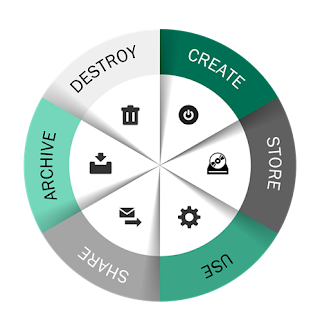Twitter Feed
Cloud Computing Evolves: An Interview with Mats Johansson
Recently, Ericsson Digital released an amazing report on Edge Computing and 5G. In it, they explained how distributed cloud computing is paving the way for the future of network communications. They…
The IoT Nexus: Bosch Connected World 2019 in Berlin
Next week, I will be influencing #LikeABosch as I accept an invitation from the company to attend Bosch ConnectedWorld 2019 (BCW19) in Berlin, Germany. This is one of the world’s largest international…
Survive and Thrive With Digital Transformation
First cloud computing then multi-cloud. How can we get ahead of this digital transformation nightmare? These are the laments heard in conference rooms and board meeting around the world. While…
The “George Jetson” of Today
He grew up in Silicon Valley, landed his first job at Apple Computers, was introduced to Nobel Prize winners by his dad and today, he takes a self-driving car…
MWC19: Where Telecommunications and Cloud Meet
As a cloud solution architect, my passion is learning the details about how cloud computing uniquely supports specific business cases. This curiosity is what drove my excitement when Ericsson invited…
Tulane University SoPA Selects “Architechting Cloud Computing Solutions”
Last week, Packt Publishing announced that “Architecting Cloud Computing Solutions” by Kevin L. Jackson and Scott Goessling was selected for use by the Tulane University School of Professional Advancement, Applied Computing Systems & Technology Program as the textbook for…
5G Wireless Technology Connecting Healthcare
Healthcare is in the middle of massive change. Called digital transformation by many, this term describes the industry’s pursuit of the many promises offered by connected patients, connected caregivers, and…
Maria Lensing: The Network Platform for Healthcare’s Future
As a girl, Maria and her family traveled to Memphis, Tennessee to get cancer treatment for her sick brother. The miracle she observed, as the healthcare providers saved her brother’s…
How “Big Iron” Does “Big Regulation”
According to Verizon, there were over there were over 53,000 security incidents in 2017, with over 2,200 of those identified as confirm data breaches. A Ponemon Institute study also showed…
Mainframe Synergies for Digital Transformation
In July of 2018, Broadcom announced its intentions to acquire CA Technologies. In the press release, Hock Tan, President and Chief Executive Officer of Broadcom, said: “This transaction represents an…
Today data has replaced money as the global currency for trade.
“McKinsey estimates that about 75 percent of the value added by data flows on the Internet accrues to “traditional” industries, especially via increases in global growth, productivity, and employment. Furthermore, the United Nations Conference on Trade and Development (UNCTAD) estimates that about 50 percent of all traded services are enabled by the technology sector, including by cross-border data flows.”
As the global economy has become fully dependent on the transformative nature of electronic data exchange, its participants have also become more protective of data’s inherent value. The rise of this data protectionism is now so acute that it threatens to restrict the flow of data across national borders. Data-residency requirements, widely used to buffer domestic technology providers from international competition, also tends to introduce delays, cost and limitations to the exchange of commerce in nearly every business sector. This impact is widespread because it is also driving:
- Laws and policies that further limit the international exchange of data;
- Regulatory guidelines and restrictions that limit the use and scope of data collection; and
- Data security controls that route and allow access to data based on user role, location and access device.
A direct consequence of these changes is that the entire business enterprise spectrum is now faced with the challenge of how to classify and label this vital commerce component.
 |
|
Figure 1– The data lifecycle
|
The challenges posed here are immense. Not only is there an extremely large amount of data being created everyday but businesses still need to manage and leverage their huge store of old data. This stored wealth is not static because every bit of data possesses a lifecycle through which it must be monitored, modified, shared, stored and eventually destroyed. The growing adoption and use of cloud computing technologies layers even more complexity to this mosaic. Another widely unappreciated reality being highlighted in boardrooms everywhere is how these changes are affecting business risk and internal information technology governance. Broadly lumped into cybersecurity, the sparsity of legal precedent in this domain is coupled almost daily with a need for headline driven, rapid fire business decisions.
To deal with this new reality, enterprises must standardize and optimize the complexity associated with managing data. Success in this task mandates a renewed focus on data classification, data labeling and data loss prevention. Although these data security precautions have historically been
glossed over as too expensive or too hard, the penalties and long term pain associated with a data breach incident has raised the stakes considerably. According the Global Commission on Internet Governance, the average financial cost of a single data breach could exceed $12,000,000 [1] , which includes:
- Organizational costs: $6,233,941
- Detection and Escalation Costs: $372,272
- Response Costs: $1,511,804
- Lost Business Costs: $3,827,732
- Victim Notification Cost: $523,965
So is adequate data classification still just simply a bridge too far?
While the competencies required to implement an effective data management program are significant, they are not impossible. Relevant skillsets are, in fact, foundational to the deployment of modern business automation which, in turn, represents the only economical path towards streamlining repeatable processes and reducing manual tasks. Minimum steps include:
- Improving enterprise awareness around the importance of data classification
- Abandoning outdated or realistic classification schemes in order to adopt less complex ones
- Clarifying organizational roles and responsibilities while simultaneously removing those that have been tailored to individuals
- Focus on identifying and classifying data, not data sets.
- Adopt and implement a dynamic classification model.[2]
The modern enterprise must either build these competencies in-house or work with a trusted third party to move through these steps. Since the importance of data will only increase, the task of implementing a modern data classification and modeling program is destined to become even more business critical.
( This post was brought to you by IBM Global Technology Services. For more content like this, visit Point B and Beyond.)
[2] Recommended steps adapted from “Rethinking Data Discovery And Data Classification by Heidi Shey and John Kindervag, October 1, 2014, available from IBM at https://www-01.ibm.com/common/ssi/cgi-bin/ssialias?htmlfid=WVL12363USEN
( Thank you. If you enjoyed this article, get free updates by email or RSS – © Copyright Kevin L. Jackson 2015)
Cloud Computing
- CPUcoin Expands CPU/GPU Power Sharing with Cudo Ventures Enterprise Network Partnership
- CPUcoin Expands CPU/GPU Power Sharing with Cudo Ventures Enterprise Network Partnership
- Route1 Announces Q2 2019 Financial Results
- CPUcoin Expands CPU/GPU Power Sharing with Cudo Ventures Enterprise Network Partnership
- ChannelAdvisor to Present at the D.A. Davidson 18th Annual Technology Conference
Cybersecurity
- Route1 Announces Q2 2019 Financial Results
- FIRST US BANCSHARES, INC. DECLARES CASH DIVIDEND
- Business Continuity Management Planning Solution Market is Expected to Grow ~ US$ 1.6 Bn by the end of 2029 - PMR
- Atos delivers Quantum-Learning-as-a-Service to Xofia to enable artificial intelligence solutions
- New Ares IoT Botnet discovered on Android OS based Set-Top Boxes












